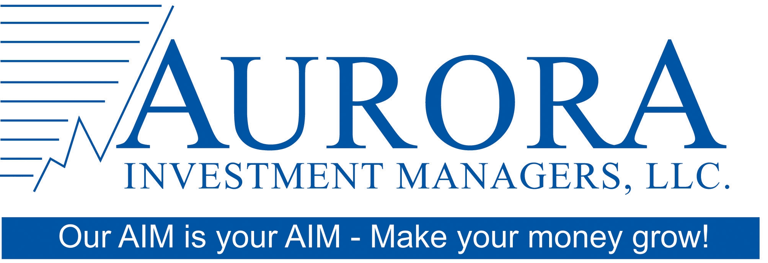Investment Objective
Aurora Investment Managers' investment objective is to carefully manage assets so that capital preservation is paramount. Our client-centric approach to portfolio construction utilizes stocks, bonds, and cash to create an investment strategy focused on the client's individual needs. At Aurora, we believe that the primary drivers of wealth creation are time horizon, asset allocation, diversification, and managing emotions.




Time Horizon
An investor's time horizon is one of the most important determining factors in selecting an appropriate asset allocation. Time horizon varies among investors and is not always related to age. For example, if investors require the use of some of their principal within five years, the asset allocation mixture for these investors may differ from other investors' within the same age group. Investors with long time horizons can afford to be more aggressive with their investments while investors with short time horizons require a more conservative approach.
Asset Allocation
We begin by asking our clients key questions in order to determine their appropriate asset allocations. Performance between asset classes varies from year to year and a customized mixture of assets smooths out the returns over time, so asset allocation allows investors to remain focused on their long-term financial goals during turbulent times.
Diversification
Diversification is a portfolio management tool that reduces the risk of any one investment impeding an investor's financial goal. At Aurora, we invest in a diversified portfolio of stocks and bonds that limits the amount of exposure to any single investment. We place a maximum of five percent* of our initial investment in a single stock or bond, and a typical portfolio has between 20-50 stocks spread out among several economic sectors.
*Five percent rule does not apply to small, concentrated accounts.
Behavior
Investors grapple with behavioral tendencies like risk aversion, frame of reference, and herd mentality on a daily basis. Managing one's emotions is probably the greatest determining factor in successful investing, and at Aurora, our goal is to help our clients avoid these investment pitfalls.
Risk aversion, in a financial context, refers to investors choosing a sure thing over an alternative choice with a higher expected return. For example, a risk averse investor would prefer to invest in a bank certificate of deposit (CD) over a stock that pays a higher dividend, because the CD is guaranteed, while the dividend and the value of the stock are uncertain. At Aurora, we prefer to use a Value approach over Momentum strategies as the former focuses on long-term growth securities while the latter focuses on the latest and greatest story.
01 RISK AVERSION
02 FRAME OF REFERENCE
03 HERD MENTALITY
Behavioral research conducted at the University of California indicates that an investor's frame of reference is the primary driver to decision making. All things being equal, it found that investors tend to hold on to their losing positions longer than their winning ones. Our goal is to monitor the prospects of each individual business on an ongoing basis. We take gains to reduce overexposure to any single security, while maintaining a core position to benefit from further growth.
Investors tend to follow the herd as it reduces the time needed to analyze investment decisions. Following the crowd reduces the feeling of regret if an investor performs poorly, because people feel comfortable knowing that they are not alone in making a bad investment decision. Robert J. Schiller of Yale University conducted a survey of 900 investors after the 1987 market crash and found that two-thirds of the participants believed the primary reason for the decline was investor psychology, and not economic fundamentals. At Aurora, we believe that periodic declines in the market provide unique opportunities to add to existing investments or upgrade the portfolio.


IN AT THE HIGH, OUT AT THE LOW
Investors often make the mistake of selling, or buying, too late.
Morningstar mutual funds conducted a study comparing investment results from individual investors against 219 growth funds for a five-year time period ending May 31, 1994. Results from the study illustrated that the growth funds had an average annualized rate of return of 12.5%, while the average individual investor within the funds lost 2.2%. The difference of 14.7% was primarily attributed to investors chasing returns. By the time the average investor hears about an investment, the large gains have already been achieved. When these investments begin to correct, investors become risk averse and sell at the worst possible time.
Aurora Investment Managers, LLC.
4850 Tamiami Trail N Ste. 301
Naples, Florida 34103
CONTACT US
Office: 617-390-8001
© 2024. All rights reserved.
Toll Free: 888-239-8129
Fax: 617-845-0385
